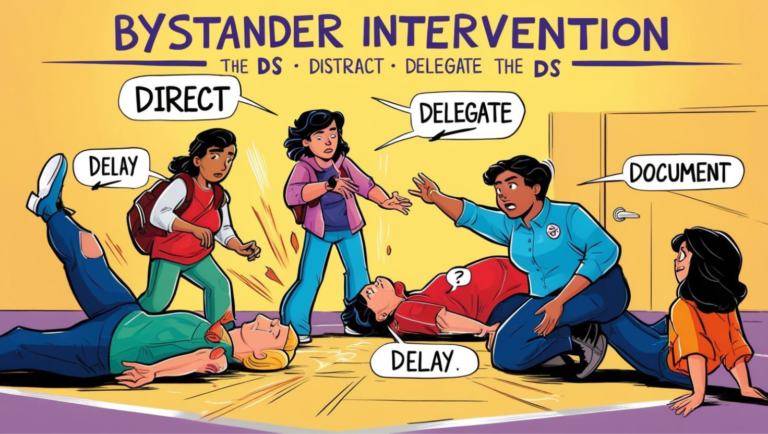Workplace Harassment and Violence Prevention (WHVP) for the Banking Industry
Courses
Join our community of learners in the banking industry to unlock comprehensive and free WHVP courses. Whether you’re a beginner or looking to upgrade your knowledge, our courses, tools and resources are designed to help maintain a workplace free from harassment and violence.


Workplace culture
Build a harassment-free workplace where everyone is valued and treated with respect
Learn at Your Own Pace
Study on your schedule, at your own pace.
Certification Available
Earn certificates to showcase your skills.
Explore Our Top Courses
Be the voice
Online Learning Courses Designed For Real Life
Explore how the practical application of amendments to the Canada Labour Code and the new Workplace Harassment and Violence Prevention Regulations, are applied in workplaces.


Join in Your Favorite Courses Today
Empower Your Team: Enroll in Our WHVP Course Today!
What sets us apart? Our commitment to offering expertly designed courses that cater to all learning levels, from beginners to advanced professionals. We prioritize a user-friendly experience, allowing you to learn at your own pace with guidance from industry experts. Join us in our journey to transform the way you learn and grow.

Frequently Asked Questions
Management including Managers and Supervisors are often involved in decision making. Thus, reasonable management actions that are part of the normal workplace environment are not considered workplace harassment and violence.
Differences in opinion between co-workers and those in leadership positions are not considered harassment or violence.
For example, supervisors can take the following measures as long as they act respectfully, professionally and in good faith:
- directly supervise employees, including setting out performance expectations and providing constructive feedback about work performance
- take measures to correct performance deficiencies, such as placing an employee on a performance improvement plan
- take reasonable disciplinary actions
- assign work, and direct how and when it should be done
- request updates or status reports
- approve or deny time off
- request medical documents to support absence from work
Domestic violence sometimes known as intimate partner violence is a form of physical, sexual or psychological harm by a current or former partner, spouse or family member. When an employee experiences domestic violence in an office or while performing work activities away from the office, such an event may physically or psychologically impact’s the employee’s ability to effectively perform their job. Employees should report occurences of harassment and violence to their designated recipient.
Yes, there is a relationship between prohibited grounds of discrimination noted in the Canadian Human Rights Act and harassment and violence in the workplace.
According to the Canadian Human Rights Act (CHRA), race, age, nationality, ethnicity, religion, sex, sexual orientation, colour, gender identity or expression, marital status, genetic characteristics, disability and conviction for an offence for which pardon has been granted or a record of suspension has been ordered, is considered prohibited grounds.
For example, harassing an employee in the workplace because of their gender identity or expression could be considered a form of workplace harassment.
It is worth noting that section 123.1 of the Canada labour code notes that “For greater certainty, nothing in this part shall be construed so as to abrogate or derogate from the rights provided for under the “Canadian Human Rights Act”.
Similar to domestic violence that may eventually make its way to the workplace, some events of harassment and violence in the workplace are under the Criminal Code of Canada. For example,
- making death threats
- sharing intimate photos on social media or through the internet
- committing voyeurism or exhibitionism
- threatening to damage property
- committing physical or sexual assault
- committing vandalism
- asserting power through physical aggression
- criminal harassment (stalking)
For any emergency related to health or safety, including those related to a criminal act, please call the emergency number provided by your organization or contact your local police immediately. Also submit a notice of occurrence to the person (designated recipient) or the work department that is responsible for receiving and resolving events of harassment and violence in the workplace.
Some examples of harassment and violence include
- aggressive or threatening behaviour, including verbal threats or abuse
- physical assault
- spreading malicious rumours or gossip about an individual or a group
- persistently criticizing, undermining, belittling, demeaning or ridiculing someone
- swearing at someone or using inappropriate language towards them
- using the Internet to harass, threaten or maliciously embarrass someone
- using the Internet to make sexual threats, or to harass or exploit someone sexually
- abusing authority by publicly ridiculing or disciplining a subordinate
- abusing authority by soliciting a sexual or romantic relationship from a subordinate, or making social invitations with sexual overtones to a subordinate
- making abusive or derogatory remarks or jokes about someone’s gender, gender identity or gender expression, sex, or sexual orientation (for example, homophobic remarks)
- sexual touching (for example, patting, pinching, caressing, kissing, fondling)
- sexual invitations or requests in return for a promise of a reward (such as a promotion)
- displaying offensive posters, cartoons or images of a sexual nature
- sending inappropriate electronic communications (for example, sexually explicit emails)
- domestic violence (also called intimate partner violence, domestic abuse or relationship abuse) is a workplace hazard when it occurs in the workplace, it puts the targeted worker at risk and may pose a threat to coworkers
There are 3 key measures that should be put in place to prevent harassment and violence in the workplace. These measures include:
- Training: Training on workplace harassment and violence prevention should be mandated as a new hire and every 3 years thereafter.
- Workplace harassment and violence prevention policy: Putting in place a workplace harassment and violence prevention policy which details the process, procedures, support and actions that an organization has established to prevent the occurrence of harassment and violence in the workplace.
- Conducting a workplace assessment in order to identify risk factors and steps to prevent harassment and violence in the workplace.
Under Part II of the Canada Labour Code, employers must protect the health and safety of everyone in the workplace. Everyone implies both employees and non-employees (vendors, contractors, & visitors).
According to part II of the CLC, the employer’s responsibilities are as follows:
- Investigating workplace accidents and implementing effective remedial measures.
- Proactively eliminating workplace hazards.
- Informing employees of hazards and ensuring that they receive the required detailed occupational health and safety training.
- Ensuring that employees’ equipment and tools are safe and that all work is performed according to established safety procedures and practices.
- Investigating work-related physical and psychological injuries and illnesses as well as other hazardous situations.





